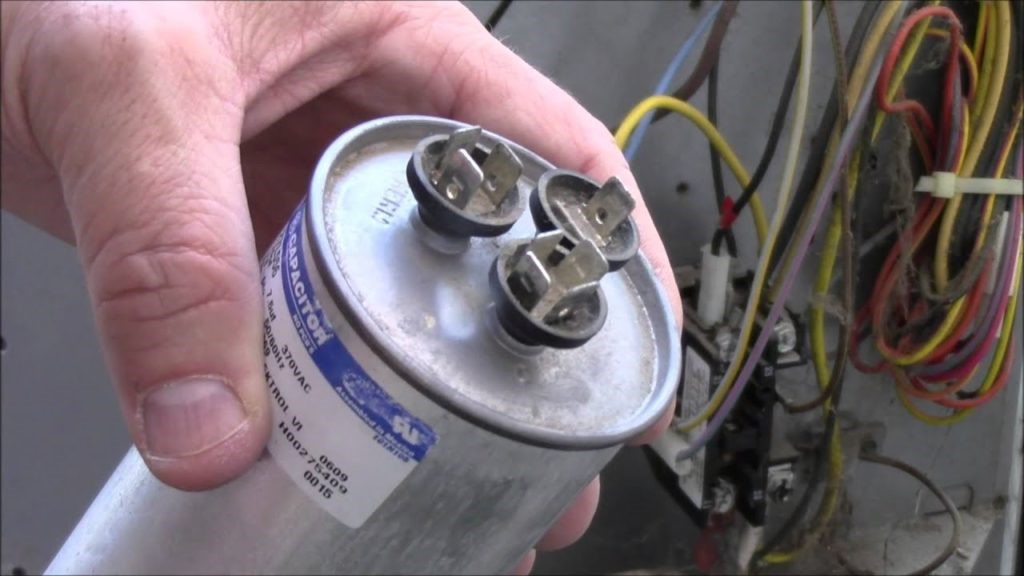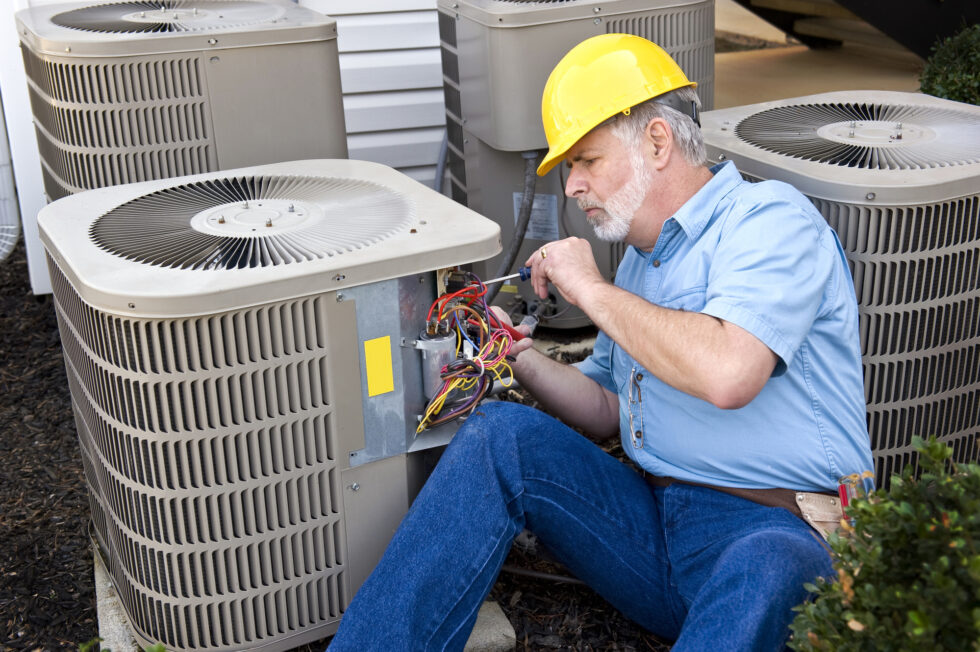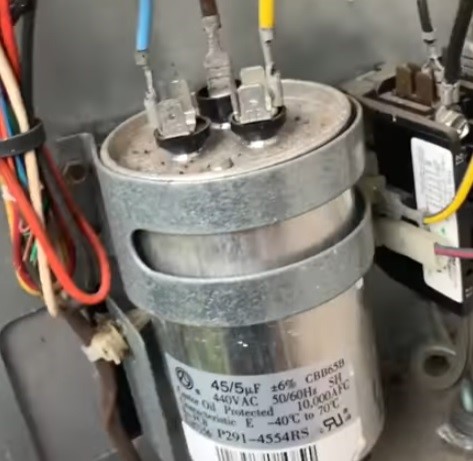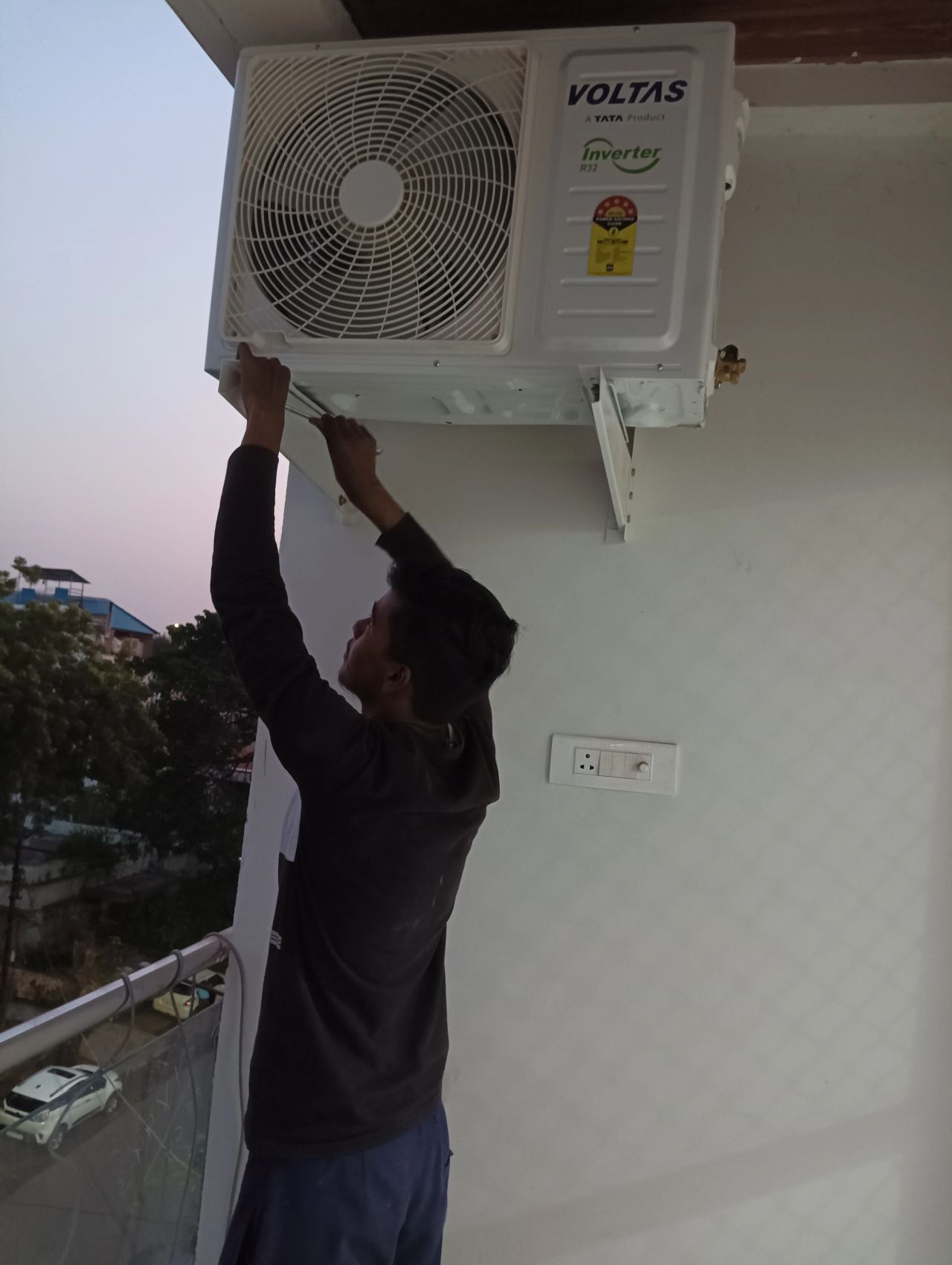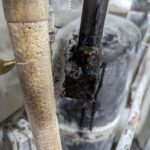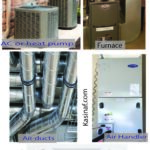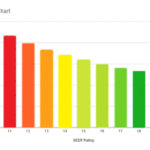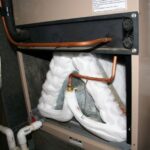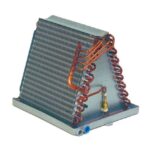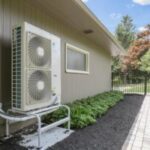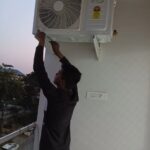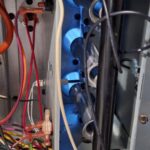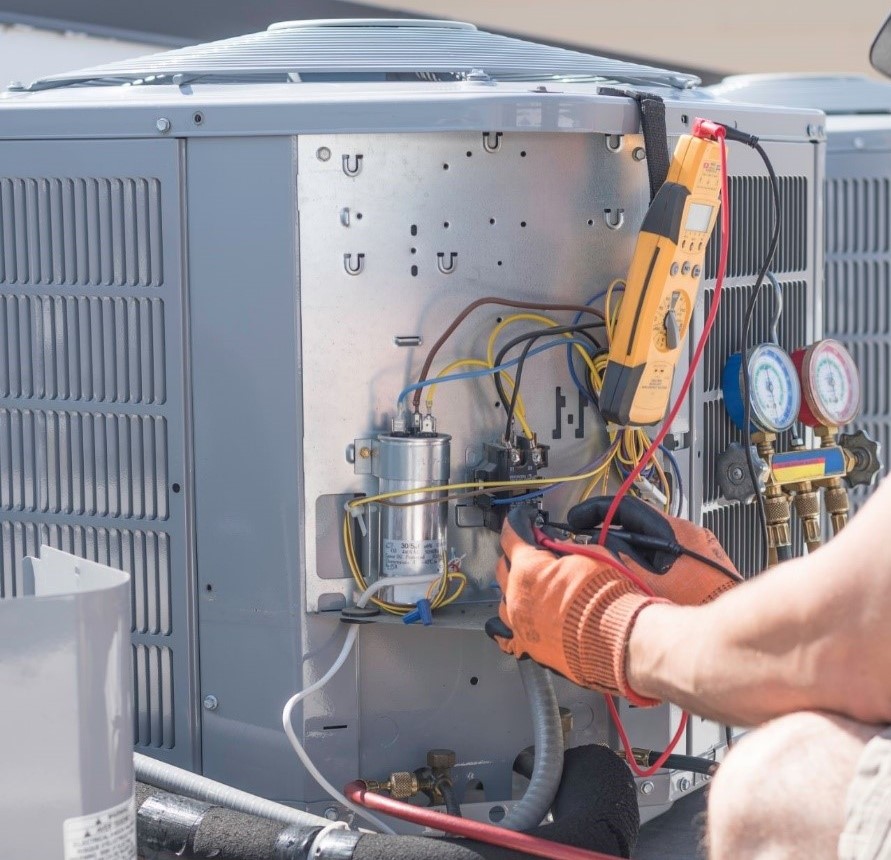
To test the capacitor on your AC unit, follow these steps carefully to ensure safety and efficiency:
- Switch off the Power: Locate the AC unit’s breaker on your home’s electrical panel and turn it off to prevent any electrical flow during the test. A central AC unit typically has a 230-volt breaker.
- Find the location of the Capacitor: Use a screwdriver to remove the access panel on your AC unit. The capacitor is a silver, cylindrical component about the size of a soda can with various colored wires connected to it.
- DisCharge: Capacitors store electrical energy, so discharge it to prevent electric shock. Use a screwdriver with an insulated handle to connect the capacitor’s terminals to each other.
- Remove the Capacitor: After discharging, safely remove the capacitor. Take a picture of the wiring for reference. Disconnect the wires and unscrew the brackets holding the capacitor in place.
- Check Its Condition: Visually inspect the capacitor. If it’s bulging or leaking, it’s likely faulty and needs replacement.
- Check the Capacitor’s Rating: Check the capacitor’s label for its microfarad (MFD) rating, which indicates its electrical storage capacity. Dual capacitors have separate ratings for the compressor and fan motor.
how to check capacitor on ac unit with multimeter
- Set up the Multimeter: Dial your multimeter to the capacitance setting, usually represented by a symbol like –|(– or a uF symbol. Refer to the multimeter’s instructions if unsure.
- Test the Capacitor:
- Single Capacitor: Place one probe on each terminal and compare the reading to the rating on the label, considering the margin of error.
- Dual Capacitor: Test the fan terminal by connecting one probe to the common terminal and one to the fan terminal. Then, test the hermetic compressor by placing one probe on the common terminal and the other on the compressor’s terminal. Compare the readings to the label.
If the capacitor’s readings deviate significantly from the label’s rating (beyond the listed margin of error), it’s likely defective and should be replaced for proper AC functioning.
How many capacitors are in an ac unit
There can be either one or two capacitors in an AC unit, depending on the system’s design. Dual capacitors are more common in newer and larger systems, while single capacitors are found in smaller or older systems
Air conditioning units typically contain one or two capacitors, depending on the type of system:
- Single Capacitor System: In many older or smaller air conditioning units, you’ll find a single capacitor. This capacitor serves both the compressor and the fan motor. It provides the necessary electrical boost for both components to start and run efficiently.
- Dual Capacitor System: Most modern air conditioning systems, especially central air conditioning units, use a dual capacitor. This capacitor has two distinct sections or ratings. One rating is for the compressor, and the other is for the fan motor. The dual capacitor provides the required electrical boost for both the compressor and the fan motor separately.
.
how much does a capacitor for ac cost
Run capacitors for air conditioners typically ranged from $10 to $50, while start capacitors might be in a similar price range or slightly higher. However, prices can change over time due to factors like inflation, supply and demand, and market conditions. It’s advisable to check with local HVAC suppliers or online retailers for the most current prices in your area.
The cost of a capacitor for an air conditioner can vary widely depending on several factors:
- Type of Capacitor: There are start capacitors and run capacitors, and they can have different price ranges. Run capacitors are generally more common, and their prices can be more affordable compared to start capacitors.
- Capacitor Size and Rating: Capacitors come in various sizes and ratings (measured in microfarads, or uF). Larger capacitors or those with higher ratings typically cost more.
- Quality and Brand: Capacitors from reputable brands or of higher quality may be more expensive but often offer better reliability.
- Service Fees: If you hire a professional HVAC technician to replace the capacitor, you’ll need to consider their service fees, which can vary based on location and the complexity of the job.

